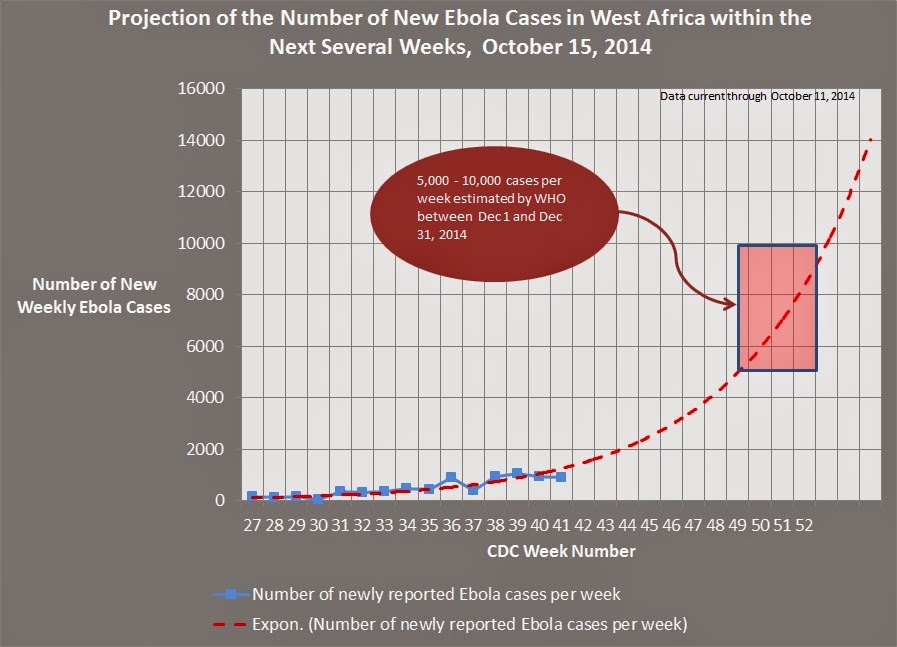According to the World Health Organization (WHO), three West
African countries continue to experience intense transmission of Ebola. More
than 16,000 cases of Ebola have been reported from Guinea, Liberia, and Sierra
Leone in the past several months since the outbreak started earlier this year (link).
There is some evidence that the rate of new Ebola infections in these countries
is not growing as fast as previously estimated which is good news. The WHO situation
report published on November 26, 2014 (link)
states “Case incidence is stable in Guinea, stable or declining in Liberia, but
may still be increasing in Sierra Leone”.
However, there is great uncertainty over the quality of the
reporting data emanating from West Africa on this Ebola outbreak. Also, based
on the fluctuating numbers of newly reported cases in each of these three
countries, it is difficult to assess the increases or decreases in the
incidence of cases in these three countries. Assuming that the case numbers
reported in the WHO situation reports are representative the number of
infections in each of these countries, the average number of new cases per day
can be graphed on a timeline. Below, the average number of new cases per day is
compared with the cumulative moving average of cases since the start of the
outbreak within each of the three countries.
These graphs clearly show that the trajectory of the number
of new cases in each country generally support the WHO statement. At this time,
the number of new daily cases in Guinea appears to be declining towards the
cumulative moving average. Recent new case counts for Liberia have fallen below
the long term cumulative moving average. For Sierra Leone, the reported average
number of Ebola cases is above the cumulative moving average, This is a clear indication that rate of Ebola
infections in Sierra Leone have not yet started to decline.
Eventually, declines in the number of new Ebola infections in
these three countries will only be apparent when the daily average of newly
reported Ebola cases drops below-and
stays below-the cumulative moving average. At that time the cumulative moving
average will begin to decline as well. Comparing the number of daily new cases in
these countries in relation to the cumulative moving daily average will help identify
when there is a downturn in the number of new Ebola infections in these
countries.
Graph Notes:
1. Data used to construct these graphs is derived from the
country totals provided by WHO in the Ebola situation and data updates current
through November 28, 2014 (link).
The new daily cases counts includes all Ebola cases reported from the country
including, confirmed, probable, and suspected cases.
2. The average number of new Ebola cases per days is
computed as the total number of newly reported cases since the last report
divided by the number of reporting days. The average number of new cases per
day is recalculated after each WHO report.








